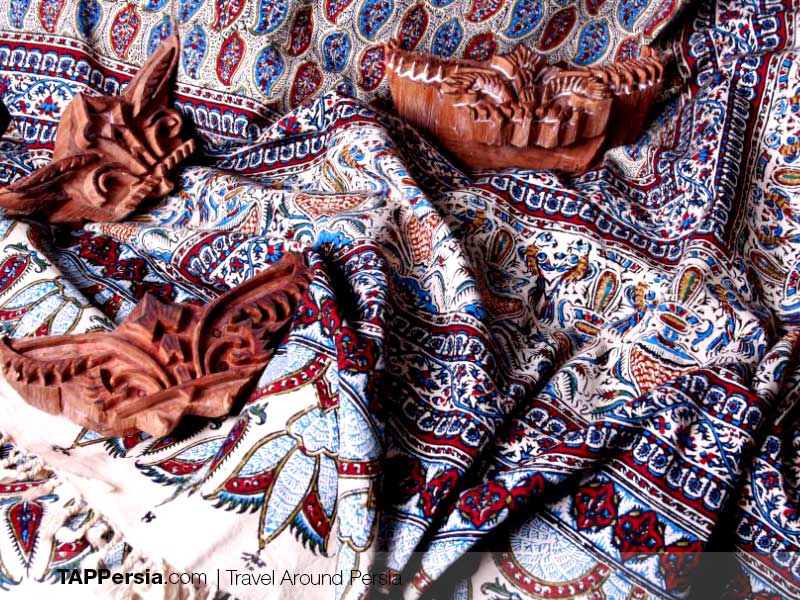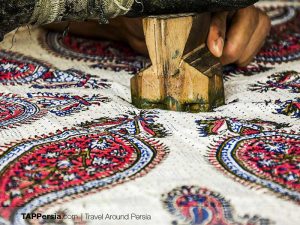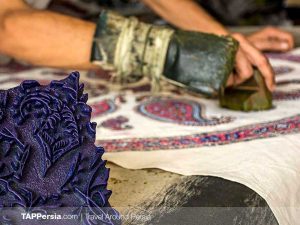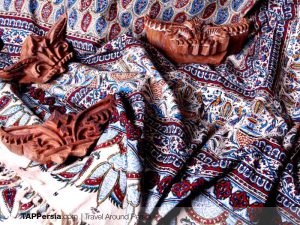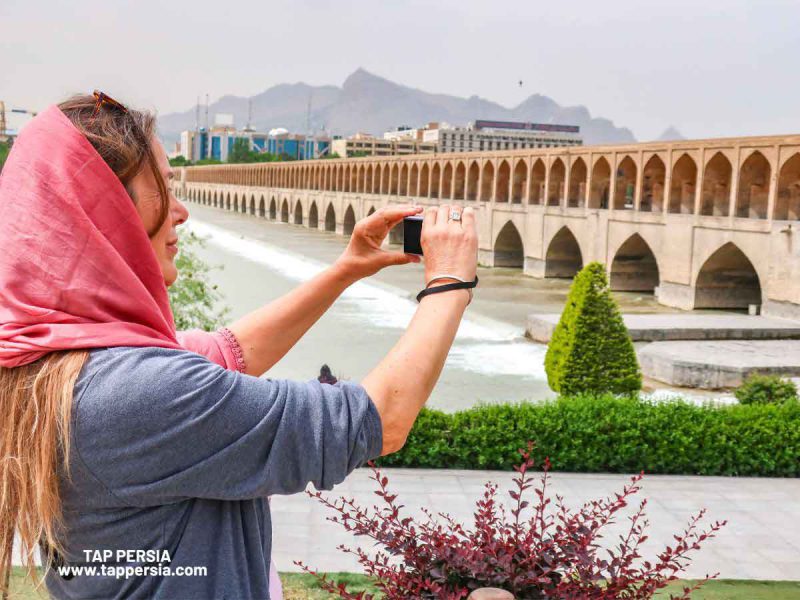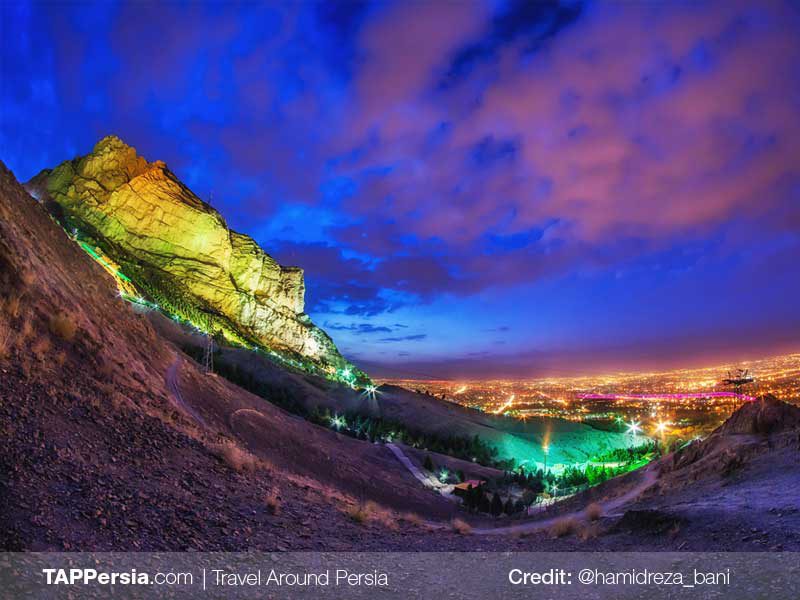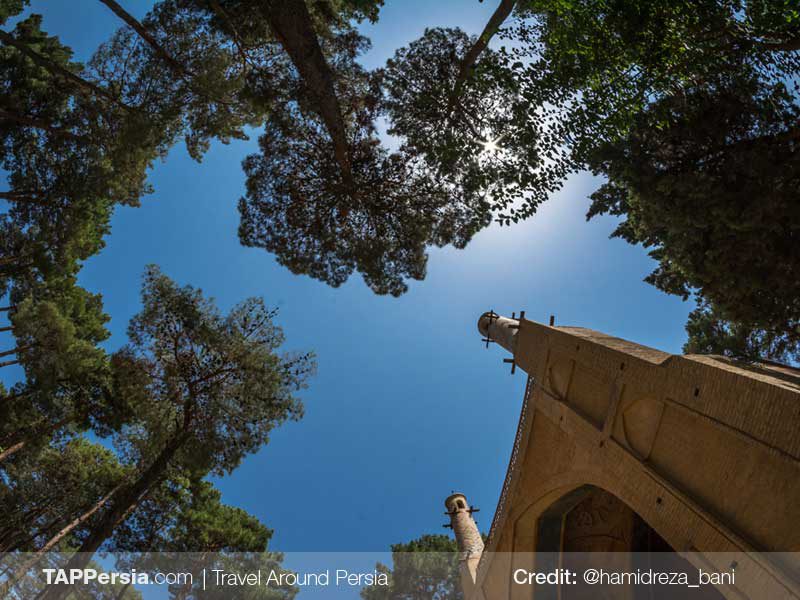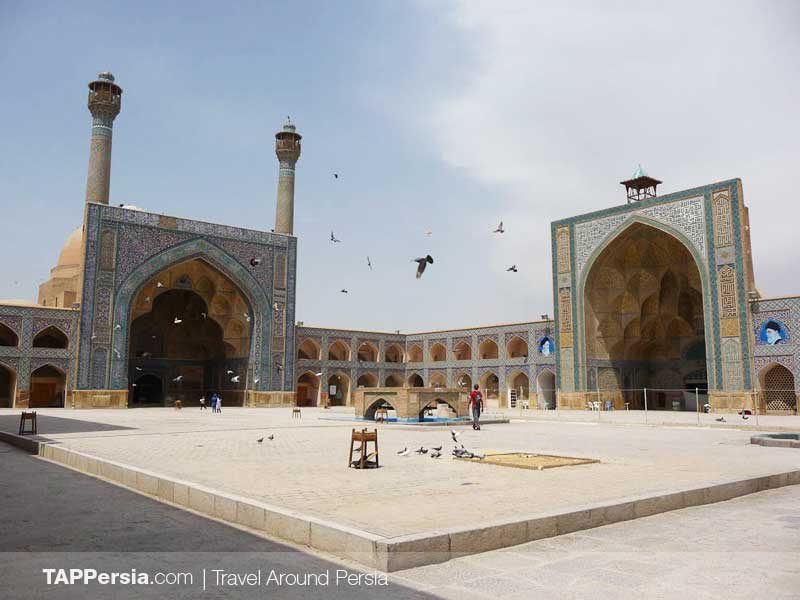Watching colorful painted pieces of cloth, makes you amaze how they are wonderfully ingenuous. Different designs and themes can hold your hand and take you to the world of art. They can be plants, flowers, animals, historical events, miniature, musicians, dancers, hunting scenes, traditional gyms (zoorkhaneh) and old Iranian literature stories and historical events.
The main colours are black, blue, red, green and yellow and the other colours are made by combination of these. All colours are natural, for example red is made by red flower or yellow by pomegranate peels.
Ghalamkari is defined as the art of designing and painting on cloth, the word ‘ghalam’ means pen in Persian as they can create marvelous designs with a pen. Its history is even older than the Persian carpet and the layout on carpets has been derived from Ghalamkari, they’re also similar to tiles, woodcarving, and plaster.
In fact, Ghamkari began to arise in Iran since mongols conquered Persia. Mongol kings were interested in importing Chinese printed cloths, so Iranian artists started to compete and innovated this astonishing art. In Safavid time, the art hit its peak especially among courtiers who used to wear a type of Ghalamkari which also was gilded. Isfahan was the capital city of Iran in that time and that’s why Naqshe jahan square in Isfahan is the center of this art until now. These days, they work on it in Tabriz, Rasht, Kashan And Mashhad too.
As it became very popular, the artisans decided to find a solution to increase the production. So, instead of drawing, they made large wooden stamps. They draw the shapes on a paper and transfer it on a piece of wood, then carve it to make shapes clear and high relief. The wood is usually from pear or hawthorn tree so that it’s softer and easier for carving. These stamps are dipped in the oil, time to time, so they stay proper to use.
Here’s an abstract of the process. First, they choose silk or cotton cloth as these materials can absorb colours better than wool. They used to dip them in Zayandeh Rud River for 5 days, but as nowadays there’s lack of water in the river, they put cloth in some pools. So, the cloths’ naps will be removed fully. After drying them under sun, it’s time to boil them in water and pomegranate peels. So the white cloth turns into creamy colour. At this step they’re ready to be designed. They dip stamps in colours and press them on the cloth very strongly, each stamp and layout is related to a special colour. To complete this, the artists also paint on cloth with brushes too. After drying, they take cloth to river again, wash them and boil them. Finally, they’re ready to use. This cloth is used as table covers, pillowcases, bed sheets, scarves and dresses.
Ghalamkar cloth(Isfahan souvenirs) is gorgeous and fantastic which shows a traditional art from old Persia. You can discover a country’s custom by its handicrafts, so this can be as an exquisite souvenir to take from Iran.

